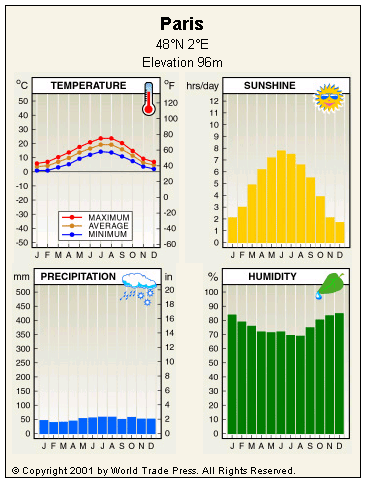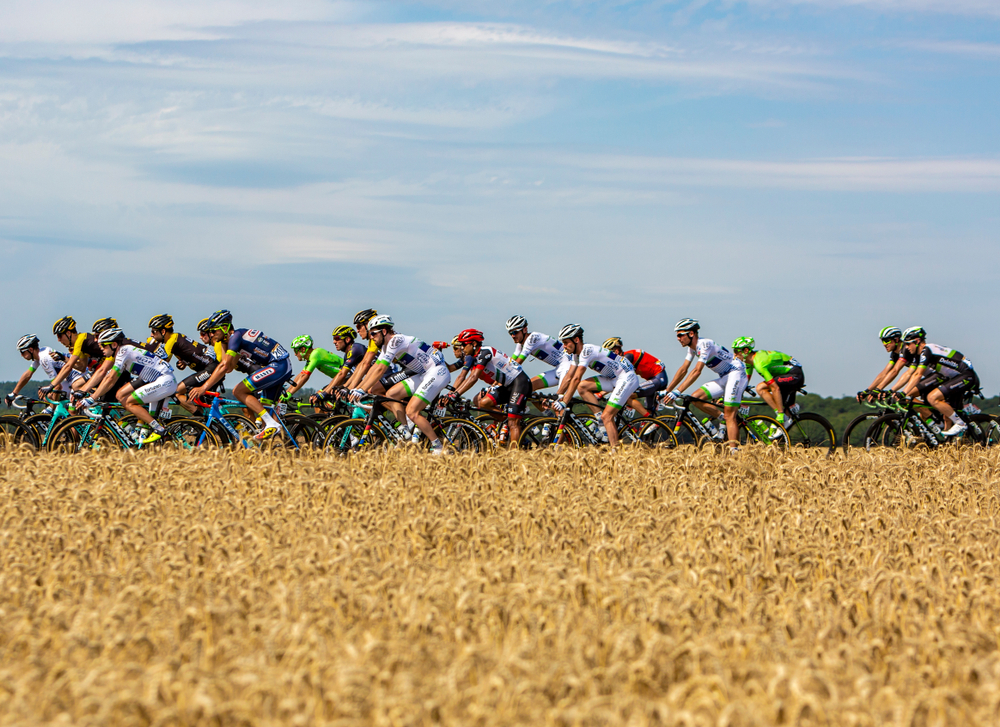Country Snapshot: Climate Overview
France is located in Western Europe and lies within the northern temperate zone. It experiences changeable conditions generated by Atlantic depressions that track eastwards across the continent. The north has a temperate climate, while farther south there are regions with mountain climates and there is also a Mediterranean influence.
Seasons
Spring (March to May) is a mild and relatively dry season for most of the country. Temperatures by the end of the season can be as high as 20°C (68°F) even in the north of the country.
Summer (June to August) is pleasant. July and August are the two warmest months across the country. The average maximum temperature recorded in Paris for the two months is 26°C (79°F).
Autumn (September to November) is rainy. Although rainfall is evenly distributed throughout the year, October is the wettest month on average, with 71 millimeters (2.8 inches) of rain recorded in Paris. Atlantic depressions are more severe at this time of year and weather can be stormy.
Winter (December to February) days are generally mild, although snow can lie on the ground periodically in the north. In the mountain regions snow is far more likely. Although westerly winds dominate for most of the season, continental anticyclones sometimes cause cold winds termed la bise (dry north or northeasterly wind) to sweep across the whole country.
Regional Variations
There are four broad climatic zones across the country.
The western seaboard experiences the changeable weather created by Atlantic depressions. It is often humid in summer and windy in autumn and winter. Overall, the region has a maritime climate with mild winters and infrequent frost and snow. Summers can be warm, but are also likely to experience rain.
Central and Eastern France has an increasingly continental climate. Temperatures become more extreme in both summer and winter. Precipitation is lower than in coastal locations, but there is a greater chance of it arriving as snow during winter.
The Mediterranean Coast has the warmest climate with over 2,500 hours of sunshine per year. The region includes Provence, which can be affected by le mistral, a strong, cold and dry wind that blows in over the winter for periods of a few days up to several of weeks.
The mountainous regions of France are the wettest and coldest parts of the country. This includes the French Alps and Pyrenees, both of which experience true mountain climates with significant snow cover and below-freezing temperatures through the winter months.
Copyright © 1993—2024 World Trade Press. All rights reserved.

 France
France 
